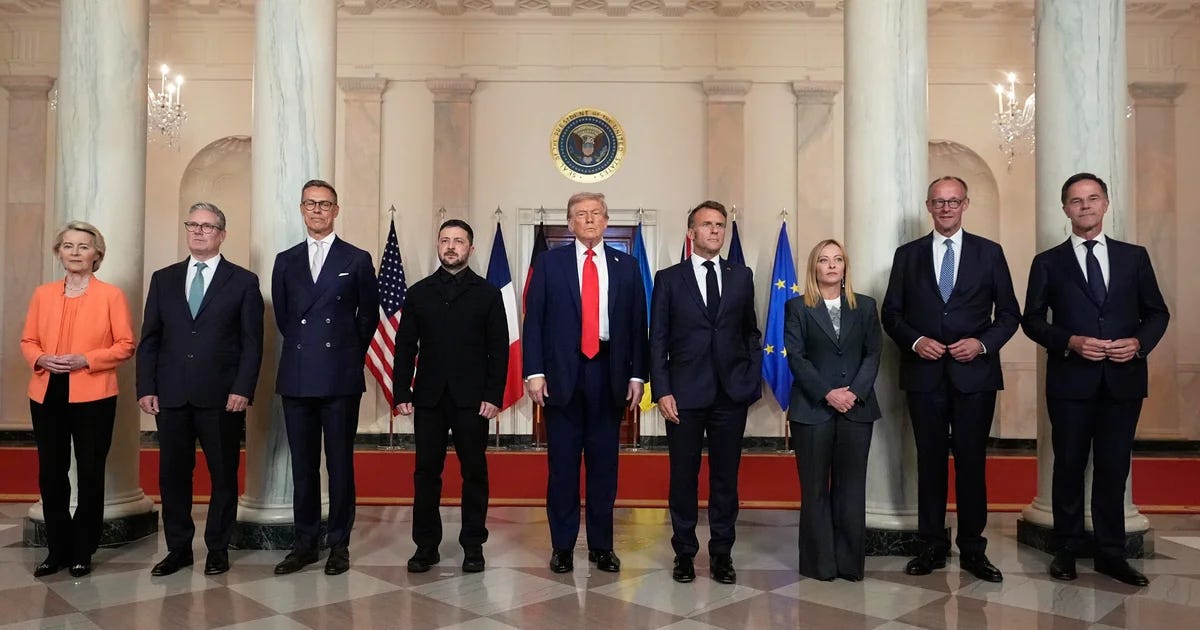The White House played host yesterday to a high‑stakes summit between U.S. President Donald Trump, Ukrainian President Volodymyr Zelenskyy, and a slate of European leaders including British Prime Minister Keir Starmer, German Chancellor Friedrich Merz, French President Emmanuel Macron, Italian Prime Minister Giorgia Meloni, and European Commission Presi…
Keep reading with a 7-day free trial
Subscribe to The Crustian Daily to keep reading this post and get 7 days of free access to the full post archives.



